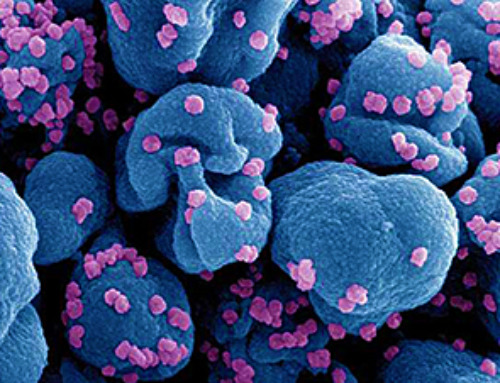For decades, a substantial number of proteins, vital for treating various diseases, have remained elusive to oral drug therapy. Traditional small molecules often struggle to bind to proteins with flat surfaces or require specificity for particular protein homologs. Typically, larger biologics that can target these proteins demand injection, limiting patient convenience and accessibility.
“There are many diseases for which the targets were identified but drugs binding and reaching them could not be developed,” says Heinis. “Most of them are types of cancer, and many targets in these cancers are protein-protein interactions that are important for the tumor growth but cannot be inhibited.”
The study focused on cyclic peptides, which are versatile molecules known for their high affinity and specificity in binding challenging disease targets. At the same time, developing cyclic peptides as oral drugs has proven difficult because they are rapidly digested or poorly absorbed by the gastrointestinal tract.
“Cyclic peptides are of great interest for drug development as these molecules can bind to difficult targets for which it has been challenging to generate drugs using established methods,” says Heinis. “But the cyclic peptides cannot usually be administered orally—as a pill—which limits their application enormously.”
Cyclizing breakthrough
The research team targeted the enzyme thrombin, which is a critical disease target because of its central role in blood coagulation; regulating thrombin is key to preventing and treating thrombotic disorders like strokes and heart attacks.
To generate cyclic peptides that can target thrombin and are sufficiently stable, the scientists developed a two-step combinatorial synthesis strategy to synthesize a vast library of cyclical peptides with thioether bonds, which enhance their metabolic stability when taken orally.
“We have now succeeded in generating cyclic peptides that bind to a disease target of our choice and can also be administered orally,” says Heinis. “To this end, we have developed a new method in which thousands of small cyclic peptides with random sequences are chemically synthesized on a nanoscale and examined in a high-throughput process.”
Two steps, one pot
The new method process involves two steps, and takes place in the same reactive container, a feature that chemists refer to as “one pot.”
The first step is to synthesize linear peptides, which then undergo a chemical process of forming a ring-like structure—in technical terms, being “cyclized.” This is done with using “bis-electrophilic linkers”—chemical compounds used to connect two molecular groups together—to form stable thioether bonds.
In the second phase, the cyclized peptides undergo acylation, a process that attaches carboxylic acids to them, further diversifying their molecular structure.
The technique eliminates the need for intermediate purification steps, allowing for high-throughput screening directly in the synthesis plates, combining the synthesis and screening of thousands of peptides to identify candidates with high affinity for specific disease targets—in this case, thrombin.
Using the method, the Ph.D. student leading the project, Manuel Merz, was able to generate a comprehensive library of 8,448 cyclic peptides with an average molecular mass of about 650 Daltons (Da), only slightly above the maximum limit of 500 Da recommended for orally-available small molecules.
The cyclic peptides also showed a high affinity for thrombin.
When tested on rats, the peptides showed oral bioavailability up to 18%, which means that when the cyclic peptide drug is taken orally, 18% of it successfully enters the bloodstream, and to have a therapeutic effect. Considering that orally-administered cyclic peptides generally show a bioavailability below 2%, increasing that number to 18% is a substantial advance for drugs in the biologics category—which includes peptides.
Setting targets
By enabling the oral availability of cyclic peptides, the team has opened up possibilities for treating a range of diseases that have been challenging to address with conventional oral drugs. The method’s versatility means it can be adapted to target a wide array of proteins, potentially leading to breakthroughs in areas where medical needs are currently unmet.
“To apply the method to more challenging disease targets, such as protein-protein interactions, larger libraries will likely need to be synthesized and studied,” says Manuel Merz. “By automating further steps of the methods, libraries with more than one million molecules seem to be within reach.”
In the next step of this project, the researchers will target several intracellular protein-protein interaction targets for which it has been difficult to develop inhibitors based on classical small molecules. They are confident that orally applicable cyclic peptides can be developed for at least some of them.
More information: Alexander L. Nielsen, De novo development of small cyclic peptides that are orally bioavailable, Nature Chemical Biology (2023). DOI: 10.1038/s41589-023-01496-y
Journal information: Nature Chemical Biology
News
Platelet-inspired nanoparticles could improve treatment of inflammatory diseases
Scientists have developed platelet-inspired nanoparticles that deliver anti-inflammatory drugs directly to brain-computer interface implants, doubling their effectiveness. Scientists have found a way to improve the performance of brain-computer interface (BCI) electrodes by delivering anti-inflammatory drugs directly [...]
After 150 years, a new chapter in cancer therapy is finally beginning
For decades, researchers have been looking for ways to destroy cancer cells in a targeted manner without further weakening the body. But for many patients whose immune system is severely impaired by chemotherapy or radiation, [...]
Older chemical libraries show promise for fighting resistant strains of COVID-19 virus
SARS‑CoV‑2, the virus that causes COVID-19, continues to mutate, with some newer strains becoming less responsive to current antiviral treatments like Paxlovid. Now, University of California San Diego scientists and an international team of [...]
Lower doses of immunotherapy for skin cancer give better results, study suggests
According to a new study, lower doses of approved immunotherapy for malignant melanoma can give better results against tumors, while reducing side effects. This is reported by researchers at Karolinska Institutet in the Journal of the National [...]
Researchers highlight five pathways through which microplastics can harm the brain
Microplastics could be fueling neurodegenerative diseases like Alzheimer's and Parkinson's, with a new study highlighting five ways microplastics can trigger inflammation and damage in the brain. More than 57 million people live with dementia, [...]
Tiny Metal Nanodots Obliterate Cancer Cells While Largely Sparing Healthy Tissue
Scientists have developed tiny metal-oxide particles that push cancer cells past their stress limits while sparing healthy tissue. An international team led by RMIT University has developed tiny particles called nanodots, crafted from a metallic compound, [...]
Gold Nanoclusters Could Supercharge Quantum Computers
Researchers found that gold “super atoms” can behave like the atoms in top-tier quantum systems—only far easier to scale. These tiny clusters can be customized at the molecular level, offering a powerful, tunable foundation [...]
A single shot of HPV vaccine may be enough to fight cervical cancer, study finds
WASHINGTON -- A single HPV vaccination appears just as effective as two doses at preventing the viral infection that causes cervical cancer, researchers reported Wednesday. HPV, or human papillomavirus, is very common and spread [...]
New technique overcomes technological barrier in 3D brain imaging
Scientists at the Swiss Light Source SLS have succeeded in mapping a piece of brain tissue in 3D at unprecedented resolution using X-rays, non-destructively. The breakthrough overcomes a long-standing technological barrier that had limited [...]
Scientists Uncover Hidden Blood Pattern in Long COVID
Researchers found persistent microclot and NET structures in Long COVID blood that may explain long-lasting symptoms. Researchers examining Long COVID have identified a structural connection between circulating microclots and neutrophil extracellular traps (NETs). The [...]
This Cellular Trick Helps Cancer Spread, but Could Also Stop It
Groups of normal cbiells can sense far into their surroundings, helping explain cancer cell migration. Understanding this ability could lead to new ways to limit tumor spread. The tale of the princess and the [...]
New mRNA therapy targets drug-resistant pneumonia
Bacteria that multiply on surfaces are a major headache in health care when they gain a foothold on, for example, implants or in catheters. Researchers at Chalmers University of Technology in Sweden have found [...]
Current Heart Health Guidelines Are Failing To Catch a Deadly Genetic Killer
New research reveals that standard screening misses most people with a common inherited cholesterol disorder. A Mayo Clinic study reports that current genetic screening guidelines overlook most people who have familial hypercholesterolemia, an inherited disorder that [...]
Scientists Identify the Evolutionary “Purpose” of Consciousness
Summary: Researchers at Ruhr University Bochum explore why consciousness evolved and why different species developed it in distinct ways. By comparing humans with birds, they show that complex awareness may arise through different neural architectures yet [...]
Novel mRNA therapy curbs antibiotic-resistant infections in preclinical lung models
Researchers at the Icahn School of Medicine at Mount Sinai and collaborators have reported early success with a novel mRNA-based therapy designed to combat antibiotic-resistant bacteria. The findings, published in Nature Biotechnology, show that in [...]
New skin-permeable polymer delivers insulin without needles
A breakthrough zwitterionic polymer slips through the skin’s toughest barriers, carrying insulin deep into tissue and normalizing blood sugar, offering patients a painless alternative to daily injections. A recent study published in the journal Nature examines [...]





















